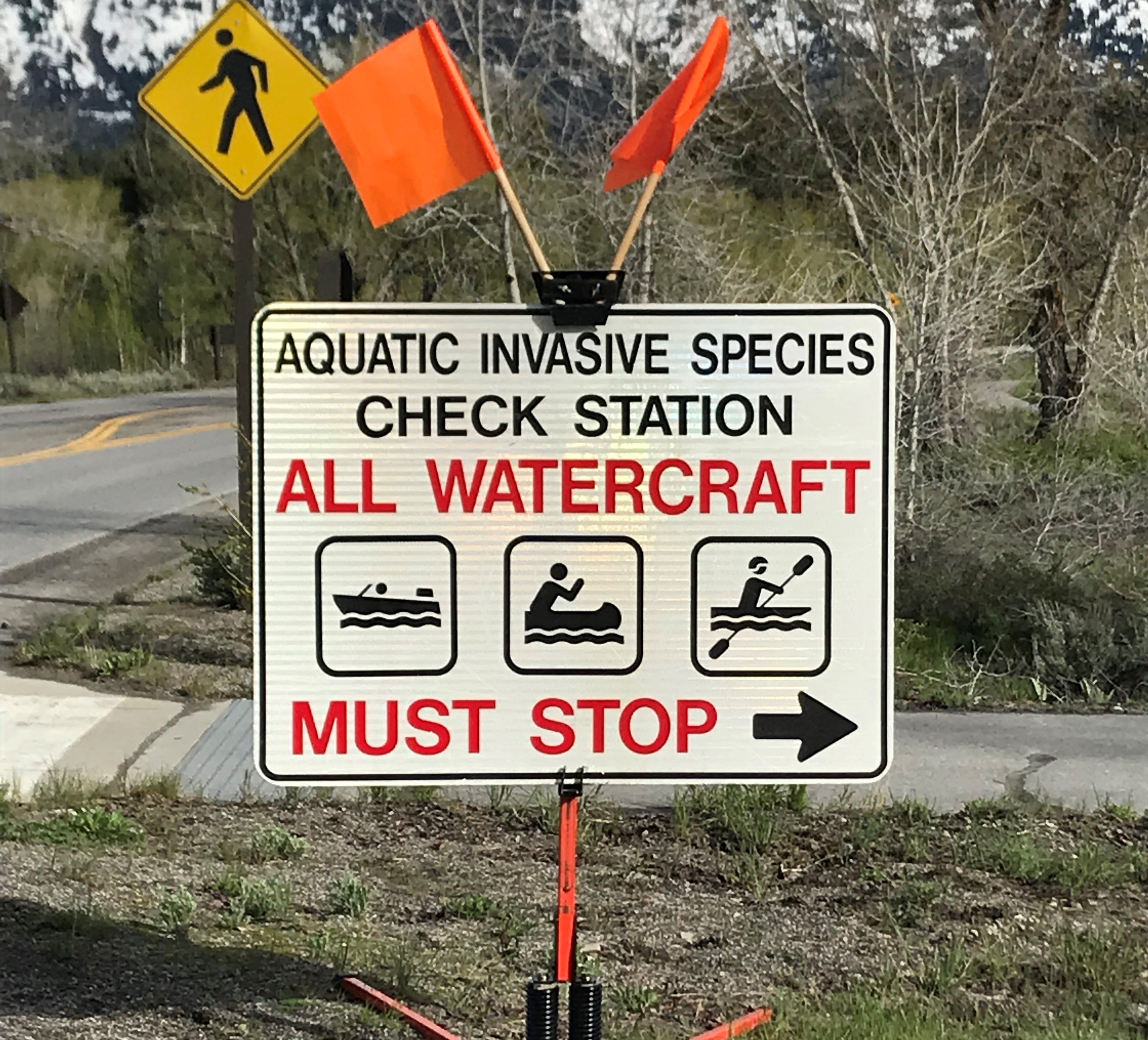News Release
You are viewing ARCHIVED content published online before January 20, 2025.
Please note that this content is NOT UPDATED, and links may not work. For current information,
visit https://www.nps.gov/aboutus/news/index.htm.

|
Subscribe
|
Contact: Denise Germann, 307-739-3393
MOOSE, WY—Local residents and visitors to Grand Teton National Park are reminded to do their part to prevent the spread of aquatic invasive species. Those who recreate on park waters have a responsibility to drain, clean, and dry their vessel, as well as check fishing gear before launching in the park.All boats should be checked at the Moose or Moran Aquatic Invasive Species Station upon entry to the park. Recreationists transporting any watercraft, including non-motorized vessels such as canoes and kayaks, are required by law to stop every time they pass an open inspection station. Watercraft that are dirty or have standing water will require a more in-depth inspection and potentially decontamination. As in past years, boat inspectors are issuing visitors an inspection verification card upon completion of the inspection. Frequent visitors should carry this card with them to expedite the inspection process during future visits.
Aquatic invasive species often have wide-spread economic, recreational, and ecological impacts. They can cause millions of dollars in damage to boating equipment and municipal water systems by clogging engines and pipes. Once an infestation has been identified, it can require costly cleaning regimens and repairs to infrastructure to rid them of the invasive species. A single boat or piece of gear that has not been properly drained, cleaned, or dried could introduce non-native species and have serious and irreversible ecological consequences.
Boater and anglers should follow these steps every time there is contact with any body of water:
- Remove all visible mud, plants, fish, or other tiny animals from your boats, trailers, and other equipment, including waders, boots, clothing, and nets.
- Eliminate water from all equipment before transporting anywhere. Much of the recreational equipment used in water contains spots where water can collect and potentially harbor these aquatic hitchhikers. Drain your boat hull and live well in a safe location (a flat paved, dirt, or gravel area) away from all park surface waters.
- Clean and dry everything that comes in contact with water before entering a new body of water. It is best to use high-pressure, hot water (available at car washes outside the park) to clean your boat, trailer, and gear.
- Dry Equipment. If possible, allow 5 days of drying time before entering new waters.
The prevention of invasive species from entering park waters is critical, and more effective than attempting to remove invasive species after they’ve been established. In response to increasing concern about aquatic invasive species being transported into park waters, park staff have increased prevention efforts. Boat inspection stations are located in Moose and Moran seven days a week during the busy summer boating season.
In 2018, Grand Teton National Park recorded having 18,505 privately owned watercraft pass through the park’s inspection stations and park staff conducted 28 decontaminations on high-risk boats.
Boaters are reminded that both a park boat permit and a state of Wyoming aquatic invasive species decal are required before launching on any park waters. Park boat permits for all motorized watercraft are $40. Permits for all non-motorized watercraft, including stand-up paddle boards, are $12. Park boat permits are available for purchase at the Craig Thomas Discovery and Colter Bay Visitor Centers and the Jenny Lake Ranger Station. State decals may be purchased at a variety of outlets in the local area.
Please visit https://www.nps.gov/grte/planyourvisit/ans.htm for more information about preventing aquatic invasive species and https://www.nps.gov/grte/planyourvisit/upload/boating19-access.pdf for information about boating in Grand Teton National Park.
Last updated: June 3, 2019
